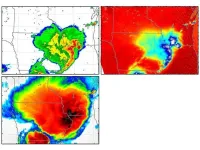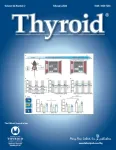(Press-News.org) The solar energy world is ready for a revolution. Scientists are racing to develop a new type of solar cell using materials that can convert electricity more efficiently than today’s panels.
In a new paper published February 26 in the journal Nature Energy, a University of Colorado Boulder researcher and his international collaborators unveiled an innovative method to manufacture the new solar cells, known as perovskite cells, an achievement critical for the commercialization of what many consider the next generation of solar technology.
Today, nearly all solar panels are made from silicon, which boast an efficiency of 22%. This means silicon panels can only convert about one-fifth of the sun’s energy into electricity, because the material absorbs only a limited proportion of sunlight’s wavelengths. Producing silicon is also expensive and energy intensive.
Enter perovskite. The synthetic semiconducting material has the potential to convert substantially more solar power than silicon at a lower production cost.
“Perovskites might be a game changer,” said Michael McGehee, a professor in the Department of Chemical and Biological Engineering and fellow with CU Boulder’s Renewable & Sustainable Energy Institute.
Scientists have been testing perovskite solar cells by stacking them on top of traditional silicon cells to make tandem cells. Layering the two materials, each absorbing a different part of the sun’s spectrum, can potentially increase the panels’ efficiency by over 50%.
“We're still seeing rapid electrification, with more cars running off electricity. We’re hoping to retire more coal plants and eventually get rid of natural gas plants,” said McGehee. “If you believe that we're going to have a fully renewable future, then you're planning for the wind and solar markets to expand by at least five to ten- fold from where it is today.”
To get there, he said, the industry must improve the efficiency of solar cells.
But a major challenge in making them from perovskite at a commercial scale is the process of coating the semiconductor onto the glass plates which are the building blocks of panels. Currently, the coating process has to take place in a small box filled with non-reactive gas, such as nitrogen, to prevent the perovskites from reacting with oxygen, which decreases their performance.
“This is fine at the research stage. But when you start coating large pieces of glass, it gets harder and harder to do this in a nitrogen filled box,” McGehee said.
McGehee and his collaborators set off to find a way to prevent that damaging reaction with the air. They found that adding dimethylammonium formate, or DMAFo, to the perovskite solution before coating could prevent the materials from oxidizing. This discovery enables coating to take place outside the small box, in ambient air. Experiments showed that perovskite cells made with the DMAFo additive can achieve an efficiency of nearly 25% on their own, comparable to the current efficiency record for perovskite cells of 26%.
The additive also improved the cells’ stability.
Commercial silicon panels can typically maintain at least 80% of their performance after 25 years, losing about 1% of efficiency per year. Perovskite cells, however, are more reactive and degrade faster in the air. The new study showed that the perovskite cell made with DMAFo retained 90% of its efficiency after the researchers exposed them to LED light that mimicked sunlight for 700 hours. In contrast, cells made in the air without DMAFo degraded quickly after only 300 hours.
While this is a very encouraging result, there are 8,000 hours in one year, he noted. So longer tests are needed to determine how these cells hold up overtime.
“It’s too early to say that they are as stable as silicon panels, but we're on a good trajectory toward that,” McGehee said.
The study brings perovskite solar cells one step closer to commercialization. At the same time, McGehee’s team is actively developing tandem cells with a real-world efficiency of over 30% that have the same operational lifetime as silicon panels.
McGehee leads a U.S. academic–industry partnership called Tandems for Efficient and Advanced Modules using Ultrastable Perovskites (TEAMUP). Together with researchers from three other universities, two companies and a national laboratory, the consortium received $9 million funding from the U.S. Department of Energy last year to develop stable tandem perovskites that can feasibly be used in the real world and are commercially viable. The goal is to create tandem more efficient than conventional silicon panels and equally stable over a 25-year period.
With higher efficiency and potentially lower price tags, these tandem cells could have broader applications than existing silicon panels, including potential installation on the roofs of electric vehicles. They could add 15 to 25 miles of range per day to a car left out in the sun, enough to cover many people’s daily commutes. Drones and sailboats could also be powered by such panels.
After a decade of research in perovskites, engineers have built perovskite cells that are as efficient as silicon cells, which were invented 70 years ago, McGehee said. “We are taking perovskites to the finish line. If tandems work out well, they certainly have the potential to dominate the market and become the next generation of solar cells,” he said.
END
Researchers take major step toward developing next-generation solar cells
2024-03-21
ELSE PRESS RELEASES FROM THIS DATE:
CUNY ISPH to launch next phase of community-based cohort study to track short- and long-term effects of multiple respiratory viruses
2024-03-21
The City University of New York (CUNY) Institute for Implementation Science in Population Health (ISPH) and the CUNY Graduate School of Public Health and Health Policy (CUNY SPH), in collaboration with Pfizer, are initiating a critical two-year prospective epidemiologic study in the spring of 2024 to track acute respiratory infections across the United States.
Project PROTECTS (Prospective Respiratory Outcomes from Tracking and Evaluating Community-based TeSting) builds on the CHASING COVID Cohort Study, which has monitored SARS-CoV-2 infection rates and ...
47th Annual UNC Lineberger Scientific Symposium: “Pancreatic Cancer: From Discovery to the Clinic”
2024-03-21
UNC Lineberger Comprehensive Cancer Center is hosting its 47th annual scientific symposium, “Pancreatic Cancer: From Discovery to the Clinic,” on May 21-22 at the Friday Center for Continuing Education in Chapel Hill, North Carolina.
The symposium is free and will feature 15 talks on the latest in pancreatic cancer basic, translational and clinical research by faculty at the University of North Carolina, Dana-Farber Cancer Institute, Johns Hopkins Sidney Kimmel Cancer Center, Memorial Sloan Kettering Cancer Center, University of Michigan ...
A new path to drug diversity
2024-03-21
Many important medicines, such as antibiotics and anticancer drugs, are derived from natural products from Bacteria. The enzyme complexes that produce these active ingredients have a modular design that makes them ideal tools for synthetic biology. By exploring protein evolution, a team led by Helge Bode from the Max Planck Institute for Terrestrial Microbiology in Marburg, Germany, has found new "fusion sites" that enable faster and more targeted drug development.
Industry often follows the assembly line principle: components are systematically assembled into complex products, with different production lines yielding different products. However, not humans are the ...
Satellite data assimilation improves forecasts of severe weather
2024-03-21
UNIVERSITY PARK, Pa. — In 2020, a line of severe thunderstorms unleashed powerful winds that caused billions in damages across the Midwest United States. A technique developed by Penn State scientists that incorporates satellite data could improve forecasts — including where the most powerful winds will occur — for similar severe weather events.
The researchers reported in the journal Geophysical Research Letters that adding microwave data collected by low-Earth-orbiting satellites to existing computer weather forecast models produced more accurate forecasts of surface gusts in a case study of the 2020 Midwest ...
Morality among low-risk differentiated thyroid cancer survivors in the U.S.
2024-03-21
A new study has shown that overall and cause-specific mortality rates in individuals in the U.S. with low-risk differentiated thyroid cancer (DTC) are low. The study is published in the peer-reviewed journal Thyroid®, the official journal of the American Thyroid Association® (ATA®). Click here to read the article now.
Cari Kitahara, PhD, from the National Cancer Institute, National Institutes of Health, and coauthors identified 51,854 individuals diagnosed with first primary DTC at low risk ...
Most detailed atlas to date of human blood stem cells could guide future leukemia care
2024-03-21
Thanks to an unusual application of game theory and machine learning technology, a large team of scientists led by experts at Cincinnati Children’s has published the world’s most detailed “atlas” of the many types of stem cells and early progenitors involved in producing human blood from diverse donors.
The team has identified more than 80 distinct subsets of hematopoietic stem and progenitor cells (HSPCs) – early-stage cells that kick off production of mature red cells, white cells ...
Novel method to measure root depth may lead to more resilient crops
2024-03-21
UNIVERSITY PARK, Pa. — As climate change worsens global drought conditions, hindering crop production, the search for ways to capture and store atmospheric carbon causing the phenomenon has intensified. Penn State researchers have developed a new high-tech tool that could spur changes in how crops withstand drought, acquire nitrogen and store carbon deeper in soil.
In findings published in the January issue of Crop Science, they describe a process in which the depth of plant roots can be accurately estimated by scanning leaves with ...
Scientists develop catalyst designed to make ammonia production more sustainable
2024-03-21
Ammonia is one of the most widely produced chemicals in the world, and is used in a great many manufacturing and service industries. The conventional production technology is the Haber-Bosch process, which combines nitrogen gas (N2) and hydrogen gas (H2) in a reactor in the presence of a catalyst. This process requires high levels of temperature and pressure, resulting in substantial power consumption. Indeed, ammonia production is estimated to consume 1%-2% of the world’s electricity and to account for about 3% of global carbon emissions.
In pursuit of more sustainable alternatives, researchers affiliated with the Center for Development of Functional Materials (CDMF) ...
Forest, stream habitats keep energy exchanges in balance, global team finds
2024-03-21
UNIVERSITY PARK, Pa. — Forests and streams are separate but linked ecosystems, existing side by side, with energy and nutrients crossing their porous borders and flowing back and forth between them. For example, leaves fall from trees, enter streams, decay and feed aquatic insects. Those insects emerge from the waters and are eaten by birds and bats. An international team led by Penn State researchers has now found that these ecosystems appear to keep the energy exchanges in balance — a finding that the scientists called surprising.
Scientists ...
Product that kills agricultural pests also deadly to native Pacific Northwest snail
2024-03-21
CORVALLIS, Ore. – A product used to control pest slugs on farms in multiple countries is deadly to least one type of native woodland snail endemic to the Pacific Northwest, according to scientists who say more study is needed before the product gains approval in the United States.
Dee Denver of the Oregon State University College of Science led a 10-week laboratory project that showed the effect of a biotool marketed as Nemaslug on the Pacific sideband snail. The study was published today in PLOS One.
Nemaslug is based on the organism Phasmarhabditis hermaphrodita, a species of tiny, parasitic worm known as a nematode.
The ...






